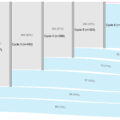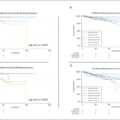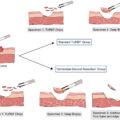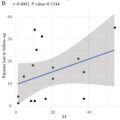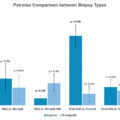Highlights
- •
This is the first systematic review and meta-analysis, including randomized controlled trials, to investigate the oncological outcomes of adjuvant therapy after radical adrenalectomy in patients with adrenocortical carcinoma.
- •
Adjuvant radiotherapy improves overall survival in adrenocortical carcinoma patients treated with radical adrenalectomy.
- •
Adjuvant mitotane therapy was associated with improved overall survival and recurrence-free survival in patients with negative surgical margin.
Abstract
Adrenocortical carcinoma (ACC) is a rare and aggressive malignancy with a high recurrence rate after surgical therapy with curative intent. Adjuvant radiotherapy (RT) and mitotane therapy have been proposed as options following the adrenalectomy. However, the efficacy of adjuvant RT or mitotane therapy remains controversial. We aimed to evaluate the efficacy of adjuvant therapy in patients who underwent adrenalectomy for localised ACC. The PubMed, Scopus, and Web of Science databases were queried on March 2024 for studies evaluating adjuvant therapies in patients treated with surgery for localized ACC (PROSPERO: CRD42024512849). The endpoints of interest were overall survival (OS) and recurrence-free survival (RFS). Hazard ratios (HR) with 95% confidence intervals (95%CI) were pooled in a random-effects model meta-analysis. One randomized controlled trial ( n = 91) and eleven retrospective studies ( n = 4,515) were included. Adjuvant mitotane therapy was associated with improved RFS (HR: 0.63, 95%CI: 0.44-0.92, p = 0.016), while adjuvant RT did not reach conventional levels of statistical significance (HR:0.79, 95%CI:0.58-1.06, p = 0.11). Conversely, Adjuvant RT was associated with improved OS (HR:0.69, 95%CI:0.58-0.83, p<0.001), whereas adjuvant mitotane did not (HR: 0.76, 95%CI: 0.57-1.02, p = 0.07). In the subgroup analyses, adjuvant mitotane was associated with better OS (HR:0.46, 95%CI: 0.30-0.69, p < 0.001) and RFS (HR:0.56, 95%CI: 0.32-0.98, p = 0.04) in patients with negative surgical margin. Both adjuvant RT and mitotane were found to be associated with improved oncologic outcomes in patients treated with adrenalectomy for localised ACC. While adjuvant RT significantly improved OS in general population, mitotane appears as an especially promising treatment option in patients with negative surgical margin. These data can support the shared decision-making process, better understanding of the risks, benefits, and effectiveness of these therapies is still needed to guide tailored management of each individual patient.
1
Introduction
Adrenocortical carcinoma (ACC) is a rare and aggressive cancer with an incidence rate of approximately 1–2 cases per million people annually [ ]. The 5-year survival rates are 60%–80% for tumors confined to the adrenal gland, 35%–50% for locally advanced disease, and 0% and 28% for metastatic disease [ ]. Surgical resection is the primary treatment option for clinically localized and locally advanced ACC with curative intent [ ].
However, the recurrence rate following adrenalectomy can be as high as 60%–80%, highlighting the need for multimodal treatment for most of these cancers [ ]. Indeed, even with complete surgical resection and negative margins, approximately 30% of patients may still experience local recurrence of ACC [ ]. In patients with positive surgical margins on the adrenalectomy specimen, the rate of local recurrence rates is as high as 60% [ ]. The guidelines [ ] recommend the using adjuvant mitotane for patients with a high risk of recurrence (stage III, or positive surgical margin, or Ki67 >10%). Although the effect of adjuvant radiotherapy (RT) has been controversial [ ], novel data support the addition of adjuvant RT to adjuvant mitotane therapy for ACC patients with positive surgical margins or stage III disease [ ]. While those 2 strategies seem promising, strong evidence is lacking. Therefore, we conducted this systematic review and meta-analysis to clarify the oncologic efficacy of adjuvant therapies with RT and/or mitotane following adrenalectomy for localized ACC.
2
Evidence acquisition
We registered the study with the International Prospective Register of Systematic Reviews (PROSPERO: registration number: CRD 42024512849). This systematic review and meta-analysis was conducted in line with the Preferred Reporting Items for Systematic Reviews and Meta-analyses (PRISMA) statement (PRISMA 2020 checklist, Supplementary Table 1 ).
2.1
Search strategy
On March 2024, the MEDLINE, Scopus, and Web of Science databases were searched to identify studies investigating the efficacy of adjuvant therapy following adrenalectomy for ACC. The search terms included: “adjuvant” and “adrenocortical carcinoma”. The detailed search strategy for each database is shown in the Supplementary Appendix 1 . In addition, searches of reference lists were performed to identify additional studies of interest. Two investigators independently performed an initial screening based on the titles and abstracts and noted the cause of exclusion of ineligible reports. Full texts were retrieved and evaluated for eligibility. In the case of discrepancies, they were solved by consensus among the authors.
2.2
Inclusion and exclusion criteria
We used the population, interventions, comparator, outcomes, and study design (PICOS) framework to define the eligibility criteria ( Supplementary Table 2 ) [ ]. We included studies that evaluated the efficacy of adjuvant therapy following the adrenalectomy for ACC. We compared these patients with patients who did not undergo adjuvant therapy following the adrenalectomy to assess recurrence-free survival (RFS) and overall survival (OS). Adjuvant therapy included mitotane therapy, radiotherapy. We did not include other adjuvant therapy, including chemotherapy, immunotherapy. We excluded studies that lacked original patient data, along with reviews, letters, editorial remarks, responses from authors, case reports, and articles not written in English. When encountering duplicate cohorts, we selected either the more recent or the higher-quality publication.
2.3
Data extraction
Two reviewers independently extracted data on baseline study and patient’s characteristics. From each study, we gathered essential details: the first author’s name, publication year, country, design of the study, type of adjuvant therapy, criteria for both inclusion and exclusion, the main endpoint, the number of participants, the median duration of follow-up, proportion of sex, their median age, median Ki67 index, hormone secretion, surgical margin status, and oncological outcomes including RFS and OS. All discrepancies were resolved by consensus with co-authors.
2.4
Quality assessment and risk of bias
Risk of bias were evaluated using the Risk-of-Bias (ROB version 2) tool as outlined in the Cochrane Handbook for Systematic Reviews of Interventions [ ]. We used the Risk Of Bias In Nonrandomized Studies – of Interventions (ROBINS-I) tool to evaluate bias in nonrandomized studies [ ]. The RoB2 and ROBINS-I assessment of each study was performed by 2 authors independently, any disagreements were resolved by consensus with a third author.
2.5
Statistical analysis
All statistical analyses were performed using R version 4.2.2 (R Foundation for Statistical Computing, Vienna, Austria, 2023; meta). Statistical significance was established at P < 0.05. To evaluate the oncological effect of adjuvant therapy following adrenalectomy in patients with ACC, we generated and analyzed forest plots presenting adjusted multivariable hazard ratios (HR) with 95% confidence intervals (CI). Subgroup analyses were performed according to the types of control group. A random-effects model was utilized to calculate the pooled HR considering the differences in study population and designs. Cochrane’s Q test and the I-square test were used to evaluate the heterogeneity. Significant heterogeneity was indicated by a P -value <0.05 in the Cochrane’s Q-tests and I 2 statistics greater than 50%. When significant heterogeneity was observed, we attempted to investigate the causes of heterogeneity [ ]. We preformed sensitivity analyses to increase homogeneity and confirm the reliability of our results.
3
Evidence synthesis
3.1
Study selection and characteristics
Our search strategy was depicted in Supplementary Fig. 1 . We identified 1 randomized controlled trial (RCT) and 11 retrospective studies comprising 4,606 eligible patients for meta-analyses [ ]. Adjuvant therapies included RT and mitotane. One RCT [ ] and 2 retrospective studies [ , ] conducted a comparison between adjuvant mitotane and surveillance (without both adjuvant mitotane and RT), while other studies [ , , ] included the patients who underwent either adjuvant RT or adjuvant mitotane. Regarding tumor stage diagnosis, 5 studies [ , , , , , ] employed European Network for the Study of Adrenal Tumors (ENSAT) staging classification [ ], while 4 studies [ , , , ] utilized the TNM classification. Among these, 4 studies [ , , , ] specifically focused on patients with tumor stage III or lower, as diagnosed by the ENSAT staging classification. Additionally, 3 studies [ , , ] exclusively included patients with a negative surgical margin. The detail of patient’s characteristics are summarized in Table 1 . The dose of mitotane and RT were summarized in Supplementary Table 3 .
| Author/Year/study design | Country | Period | Number of patients | Median follow-up duration, mo | Sex M:F | Median age, years | Tumor stage (%) | Median Ki67 index (%) | Hormone secretion(%) | Margin status (%) | ||||
|---|---|---|---|---|---|---|---|---|---|---|---|---|---|---|
| Total | AdjuvantRT | No AdjuvantRT | Adjuvantmitotane | No Adjuvantmitotane | ||||||||||
| Wu et al. 2024/ retrospective | China | 2015–2021 | 105 | 46 (44) | 59 (56) | 70 (67) | 35 (33) | I:34.1 C:39.2 | I:20:26 C:31:28 | I:42 C:55 | ENSAT I:I:2 (4) II:35 (76) III:8 (17) C:I:5 (8) II:35 (59) III:8 (14) | I:15 C:20 | I:11(24) C:19 (32) | I: R0:35 (76) R1:6 (13) C: R0:47 (80) R1:5 (8) |
| Terzolo et al. 2023/ open label, randomized, phase 3 trial NCT00777244 ADIUVO | Italy, Germany, France, Canada, USA, Brazil, Switzerland | 2008–2018 | 91 | 0 | 0 | 45 (49) | 46 (51) | 48 | I:12 (27):33 (73) C:15 (33):31 (67) | I:51 C:50.5 | ENSAT I:I:9 (20) II:30 (67) III:6 (13) C:I:12 (26) II:29 (63) III:5 (11) | I:5 C:5 | I:20 (44) C:16 (36) | R0 100% |
| Passman et al 2023/ retrospective/ utilizing the NCDB | USA | 2010–2019 | 1175 | 104(9.3) | 539(48.3) | 275(24.6) | 539(48.3) | 37 | 445 (37.9): 730 (62.1) | 54.1 | TNM I:113 (9.6) II:539 (45.9) III:523 (45.5) | N/A | N/A | R0: 866 (80.9) R1or2:204 (19.1) |
| Wu et al. 2021/ retrospective/ utilizing the SEER database | USA | 2004–2016 | 365 | 55 (15) | 310 (85) | N/A | N/A | 26 | I: 26 (47):29 (53) C: 112 (36):198 (64) | I:53 C:54.5 | ENSAT I:I/II:25 (45) III:30 (55) C:I/II:189 (61) III:121 (39) | N/A | N/A | N/A |
| Ginsburg et al. 2021/ retrospective/ utilizing the NCDB | USA | 2004–2017 | 1433 | 259(18) | 1174(82) | N/A | N/A | 38.7 | I: 104 (40):155 (60) C: 468 (40):707 (60) | I:53 C:54 | TNM I: I/II 89 (35) III/IV:92 (35) Missing78 (30) C:I/II 322 (27) III/IV:202 (17) Missing650 (55) | N/A | N/A | I:R0:141 (54) R1:118 (46) C:R0:949 (81) R1:225 (19) |
| Calabrese et al. 2019 retrospective | Italy | 2001–2015 | 152 | 0 | 0 | 100 (66) | 52 (34) | I:57 C:45 | I: 37 (37):63 (63) C: 21 (40.4):31 (59.6) | I: 45 C: 49.5 | ENSAT I:I/II 77 (77) III:23 (23) C:I/II 38 (73) III/IV:14 (27) | I:<10:23 (25.3) C:<10:21(48.8) | I:51(51) C:21 (40) | I:R0:71 (74) R1:22 (23) C:R0:40 (77) R1:12 (23) |
| Berruti et al. 2017 retrospective | Italy | 1985–2003 | 102 | 0 | 0 | 47 (46) | 45 (44) | I:141 C:142 | I: 11 (23):36 (77) C:18 (40):27 (60) | I: 42 C:44 | TNM I:I:3 (6) II:27 (57) III:11 (24) IV:6 (13) C: I:4 (9) II: 25 (57) III:11 (25) IV:4 (9) | N/A | I:24(51) C:17 (38) | R0 100% |
| Postlewait et al. 2016 retrospective | USA | 1993–2014 | 207 | 18 (9) | 189 (91) | 88 (43) | 119 (57) | 44 | I: 45 (38):73 (62) C:35 (39):53 (61) | I: 51 C:53 | TNM I:I:2 (2) II:22 (27) III:24 (29) IV:34 (42) C: I:9 (8) II: 41 (37) III:24 (29) IV:25 (23) | N/A | I:48(58) C:35(32) | I:R0:51 (65) R1:23 (30) R2:4 (5) C:R0:76 (72) R1:24 (23) R2:6 (6) |
| Beuschiein et al. 2015 retrospective German cohort | German | 1979–2011 | 319 | 30 (9) | 289 (91) | 84 (26) | 235 (74) | 43.7 | 112:207 | 46.3 | ENSAT I:27 (9) II:202 (63) III:90 (28) | 10 | 101 (32) | R0: 100% |
| Else et al. 2014 retrospective | USA | 1979–2013 | 391 | 276 (71) | 115 (29) | 264 (68) | 127 (32) | 35.2 | 158:233 | 47.4 | ENSAT I:12 (3) II:169 (43) III:110 (28) IV:100 (26) a | N/A | 167(43) | R0:164 (42) R1: 227 (58) |
| Habra et al. 2013 retrospective | USA | 1998–2011 | 48 | 16 (33) | 32 (67) | 14 (29) | 34 (71) | I:22 C:33 | I:11 (34):21 (66) C:6 (38):10 (62) | I: 48 C:44 | N/A I:II:9 (56) III:7 (44) C:II:17 (53) III:15 (47) | N/A | I:8(50) C:15(47) | I:R0:7 (44) R1:6 (38):R2:1 (6) C:R0:13 (41) R1:11 (34)R2:2 (6) |
| Grubbs et al. 2010 retrospective | USA | 1991–2008 | 218 | N/A | N/A | 28 (13) | 190 (87) | 88 | I:14:8 C128:68 | I: 50 C:46 | Lee classification system I:I/II 5 (26) III:14 (74) C:I/II 77 (45) III/IV:95 (55) | N/A | I: 14(63) C: 107(54) | I: R0:22 (100) C: R0:184 (94) R1:12 (0.6) |
Stay updated, free articles. Join our Telegram channel

Full access? Get Clinical Tree




